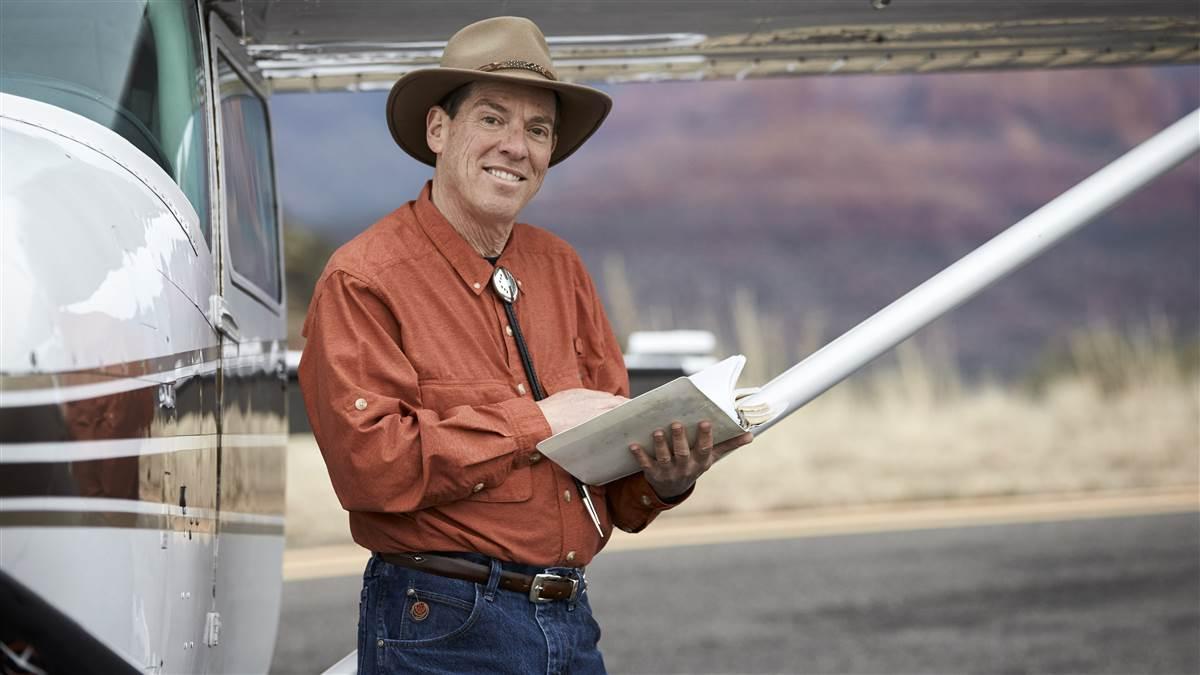Flying Carpet
Cloud wings

A VFR pilot once contacted Greg Brown after declaring an emergency because of flashing cockpit lights and beeping horns. His instructor had never explained marker beacons.
www.GregBrownFlyingCarpet.com
Yes, mastering flight by tiny needles is tough, but navigation, holds, and approaches are exciting and fun. And while the instrument rating may be the hardest rating, it’s also the most safety-enhancing, rewarding, and practical. When I earned my cloud wings 40 years ago this month, my flight-completion rate doubled to more than 90 percent.
Instrument flying, of course, gets you where you’re going without sight of the ground, and instrument approaches deliver you safely to landing. As with VFR cross-countries, instrument flight plans are crafted around checkpoints, but using predefined fixes from an instrument flight rules (IFR) chart. These days, thanks to GPS and moving maps, we can fly great distances and shoot programmed instrument approaches almost as readily as by looking out the window. But it wasn’t always that easy.
Jimmy Doolittle accomplished the first “blind landing” in 1929, but it took years to perfect the process. A few years later, author-pilot Bob Buck launched into clouds in his Stearman after reading a 25-cent instrument-flying booklet, and without radio navigation, flew a heading to better weather. In 1950, my dad learned the “four-course range,” navigating airways and approaches by listening to Morse code. “A” indicated one side of course, and “N” the other. On-course aviators were treated to a steady tone.
By the time I learned, we navigated via nearby VOR and nondirectional beacon (NDB) ground stations, and could not directly measure distance or groundspeed. That meant flying step by step between fixes, much like a sequential board game.
Back then, well-equipped instrument aircraft boasted two VOR nav/com radios, an automatic direction finder (ADF) for tracking NDBs, a marker beacon receiver, and a clock. Cross-countries followed circuitous VOR airways, and the only moving map was in your head. We recorded crossing time over each fix, calculated groundspeed based on time and distance from the previous fix, and then estimated and reported time to the next one, all while hand-flying in clouds.
On nonprecision VOR and NDB approaches, we’d start timing at the final approach fix, plummet at constant airspeed to minimum descent altitude, and if the airport didn’t appear at the appointed time, miss the approach. Today’s instrument students still sample VOR approaches, but you ain’t seen nothin’ until shooting a timed approach to minimums in turbulence or icing, while wondering if you’ve passed the airport.
Flashing and beeping marker beacons denoted progress on precision instrument landing system (ILS) and localizer approaches. When timing from beacons, pilots were supposed to note when the beeping started and ended, and time from the midpoint. We learned, however, to start timing when the beeping seemed loudest.
Distance measuring equipment (DME) revolutionized IFR navigation by electronically calculating distance to compatible VORs. It seemed miraculous, knowing your exact position between fixes. Later, VOR-DME RNAV (area navigation) empowered pilots to fly straight-line courses. We’d scribe a line across IFR charts, measure crossing radials and distances from en route VORs, phone all those waypoints to flight service, and manually enter them in the cockpit before takeoff. True point-to-point IFR navigation debuted with the maritime loran system, but with spotty coverage and no instrument approaches.
Today’s instrument flying is much enhanced by “direct-to” GPS, moving maps, synthetic vision, noise-canceling headsets, and in-cockpit weather. While learning attitude instrument flying remains demanding, IFR navigational challenges have shifted from determining “where you are and where you’re going” to properly programming GPS navigators. Staying instrument current is also easier.
Why endure all this? Because there’s no greater kick than launching into mist, playing the world’s most intriguing mind game, and bursting from clouds over your destination runway. Each technological advance just makes IFR flight safer and more fun.



